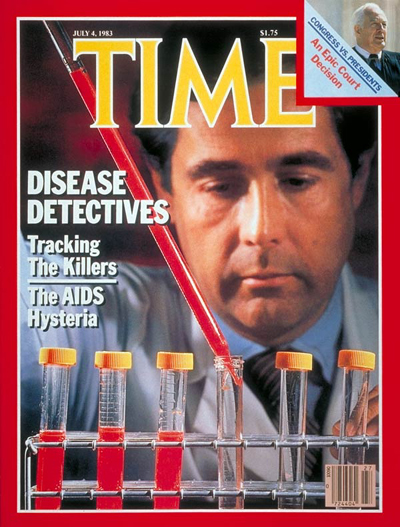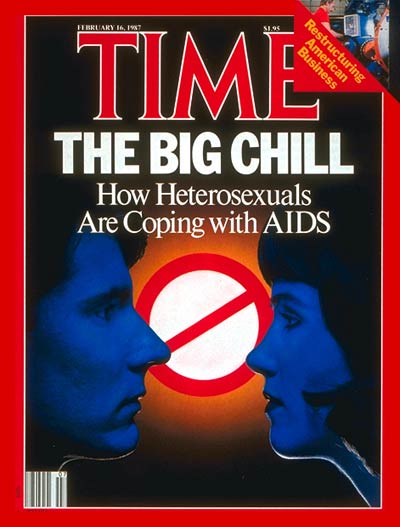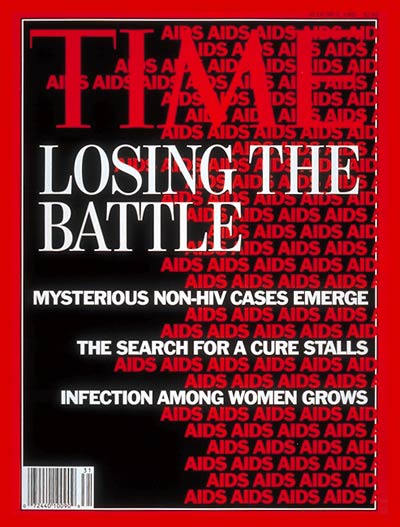
World AIDS Day, which falls each year on Dec. 1., has many purposes, from research support to remembrance—but these days the observance can largely skip the issue of basic awareness. Decades after HIV first baffled doctors, the basics of the way it affects the immune system are taught in many schools and, perhaps just as tellingly, the acronyms AIDS and HIV no longer require explanation when they appear in print.
In the early 1980s, the situation was pretty much the opposite. The first one-page story about AIDS appeared in the pages of TIME in 1982, and its purpose was simply to explain the whispers and rumors that some readers may have heard.
Unfortunately, due to the medical circumstances surrounding AIDS at the time, there wasn’t much that the magazine could explain.
Though the symptoms first started showing up in clinics in large cities in 1979—cancer, pneumonia and infections that should have been rare among the young men who showed up with them—it had only been 16 months since the Centers for Disease Control began tracking what had recently been dubbed AIDS. “During that period, AIDS has struck 547 people in the U.S. and at least 21 abroad, killing 232, more than toxic shock syndrome and the Philadelphia outbreak of Legionnaire’s disease combined,” TIME noted, and the rate of occurrence was rising. At the time, about three-quarters of those affected were gay men, one-quarter used needle drugs, a small amount were Haitian immigrants who were affected before they left home and a tiny percentage were hemophiliacs.
The choice of comparisons was telling: Legionnaire’s disease and toxic shock syndrome had, in the years just before, made health headlines. Both had been cases in which a mysterious disease struck down a particular group of people who would not have been expected to be affected. But both were also cases in which medical sleuthing had eventually revealed both cause and cure.
AIDS was proving to be a different story: “So far, efforts to isolate an AIDS bug have come to nothing,” the article continued. “The CDC has cultured specimens from lymph nodes, urine, feces and blood of AIDS victims and then inoculated them into specially bred marmosets, at a cost of $25,000 for testing on each animal. Unfortunately, as Curran points out, ‘it is not known whether there is a transmissible agent, whether the patients we’re studying harbor it, which body secretion may contain it, and whether marmosets are an appropriate species.'”
In other words, what was known was almost nothing. Now, about 30 years later, though a full and permanent cure has not yet been discovered, AIDS is much more manageable thanks to revolutions in drugs and treatment. It’s worth remembering how much has changed since then.
Read the full story, here in the TIME Vault: The Deadly Spread of AIDS
AIDS Cover Stories







More Must-Reads from TIME
- Cybersecurity Experts Are Sounding the Alarm on DOGE
- Meet the 2025 Women of the Year
- The Harsh Truth About Disability Inclusion
- Why Do More Young Adults Have Cancer?
- Colman Domingo Leads With Radical Love
- How to Get Better at Doing Things Alone
- Michelle Zauner Stares Down the Darkness
Write to Lily Rothman at lily.rothman@time.com